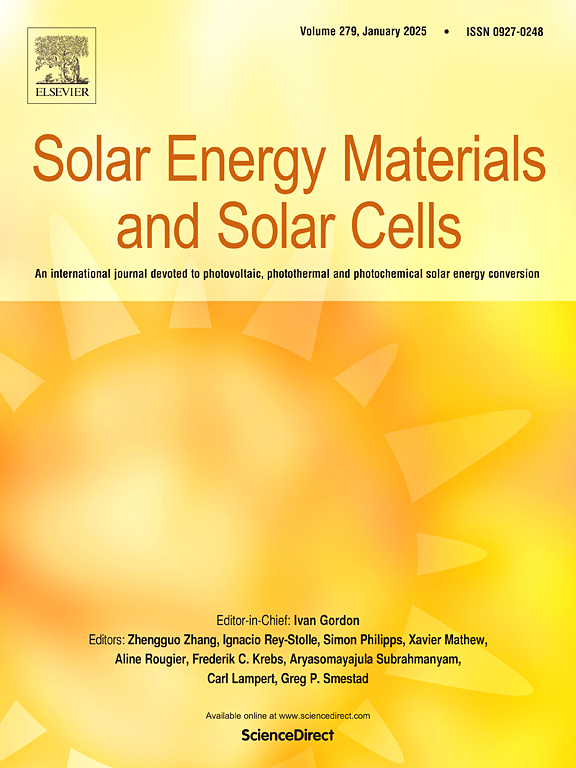Genetic algorithm-driven design of NIR-Reflective transparent colored multilayers for enhanced radiative cooling
IF 6.3
2区 材料科学
Q2 ENERGY & FUELS
引用次数: 0
Abstract
Passive radiative cooling is a promising path to tackle worsening energy crisis and global warming. Despite advancements in cooling mechanisms, material design, preparation technologies, and practical applications, the traditional white or silver appearance fails to meet both aesthetic and functional requirements, and the lack of transparency limits their applicability in scenarios where optical clarity is crucial. In this work, a genetic algorithm is employed to optimally design a dielectric/metal/dielectric/metal/dielectric stacked multilayer structure as a near-infrared (NIR) reflector, which is integrated with a plain glass substrate and an infrared high-emission PDMS layer on the outermost layer to form a transparent-colored radiative cooler (TCRC). By integrating a Fabry-Perot resonant cavity within the NIR reflector, we achieved customization of TCRC with varying colors. A grey TCRC exhibits optimal performance with visible transmissivity of 0.63, high NIR reflectivity of 0.88, and atmospheric transparency window emissivity of 0.95, all demonstrating angular independence (<60°). In outdoor experiments during midday, TCRC achieves a room temperature reduction of 17.6 °C compared to the original glass. Additionally, TCRC exhibits an extraordinary potential for building energy-saving in most climate zones. This work provides a valuable reference for the further development of radiative cooling and the design of metamaterials.

用于增强辐射冷却的nir反射透明彩色多层材料的遗传算法驱动设计
被动辐射冷却是解决日益严重的能源危机和全球变暖的一条很有前途的途径。尽管在冷却机制、材料设计、制备技术和实际应用方面取得了进步,但传统的白色或银色外观无法满足美学和功能要求,而且缺乏透明度限制了它们在光学清晰度至关重要的场景中的适用性。本文采用遗传算法优化设计了一种电介质/金属/电介质/金属/电介质堆叠多层结构作为近红外(NIR)反射器,该结构与平面玻璃基板和最外层红外高发射PDMS层集成,形成透明色辐射冷却器(TCRC)。通过在近红外反射器内集成法布里-珀罗谐振腔,我们实现了不同颜色的TCRC定制。灰色TCRC表现出最佳性能,其可见光透过率为0.63,近红外反射率为0.88,大气透明窗口发射率为0.95,均具有角无关性(<60°)。在正午的室外实验中,与原始玻璃相比,TCRC实现了17.6°C的室温降低。此外,TCRC在大多数气候区都具有非凡的建筑节能潜力。这为辐射冷却的进一步发展和超材料的设计提供了有价值的参考。
本文章由计算机程序翻译,如有差异,请以英文原文为准。
求助全文
约1分钟内获得全文
求助全文
来源期刊

Solar Energy Materials and Solar Cells
工程技术-材料科学:综合
CiteScore
12.60
自引率
11.60%
发文量
513
审稿时长
47 days
期刊介绍:
Solar Energy Materials & Solar Cells is intended as a vehicle for the dissemination of research results on materials science and technology related to photovoltaic, photothermal and photoelectrochemical solar energy conversion. Materials science is taken in the broadest possible sense and encompasses physics, chemistry, optics, materials fabrication and analysis for all types of materials.
 求助内容:
求助内容: 应助结果提醒方式:
应助结果提醒方式:


